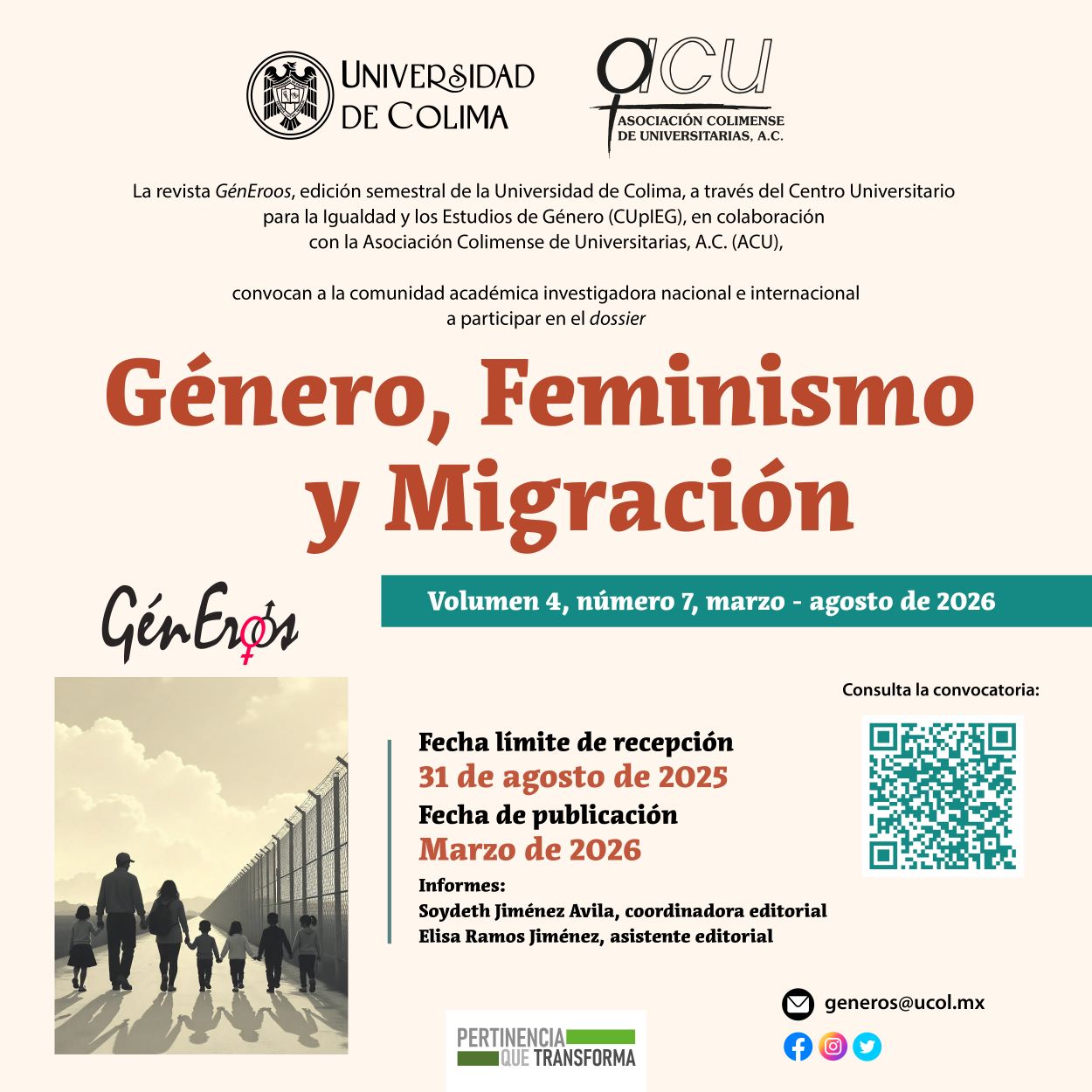Competitiveness and gender discrimination
in salary for eight mexican tourist nodes
Keywords:
Competitiveness, tourist nodes, gender wage discrimination, Mexico, model of MincerAbstract
The present work analyzes the income behavior of women and men in node cities of the tourist regions of Mexico during the last two decades as a critical element of competitiveness, based on the Mincer salary model. This analysis was carried out in 8 Mexican tourist nodes. The
study variables were gender, income per hour, years of schooling, experience, and salary gap by gender. A pooled data model was used to carry out the econometric analyzes. There was evidence of wage discrimination in the tourist nodes, which ranges between 30.57% and 43.98% in
favor of men, the lowest wage gap by gender corresponds to Mexico City and the highest to Ciudad Juárez, Chihuahua.
Regarding wage competitiveness, the nodes with the highest competitiveness are Monterrey, Los Cabos, and Mexico City for both women and men.
Downloads
Metrics
References
Bakas, F.; Costa, C.; Breda, Z. y Durão, M. (2018). A Critical Approach to the Gender Wage Gap in Tourism Labor. En: Tourism, Culture & Communication, 18, pp. 35-49.
Cardozo, D.L.; Fogel, K.M.; Molinas, L.R. y Rabito, M.R. (2005). Efectos de la educación en los ingresos: Una exploración de la teoría de Mincer aplicada a la realidad paraguaya. En: Población y Desarrollo, 29, pp. 60-75.
Ferreira, C.R. y Silva, J.R. (2016). Pay Gap by Gender in the Tourism Industry of Brazil. En: Tourism Management, 52, pp. 440-450.
Gandara, J.M.; Chim-Miki, A.F.; Domareski, T.C. y Biz, A.A. (2013). La competitividad turística de Foz Do Iguacu según los determinantes del Integrative Model de Dwyer y Kim: Analizando la estrategia de construcción del futuro. En: Cuadernos de Turismo, 31, pp. 105-128.
Gujarati, D. y Porter, D. (2010). Econometría. México: McGraw Hill.
Jabbaz, M.; Samper-Gras, T. y Díaz, C. (2018). La brecha salarial de género en las instituciones científicas. Estudio de caso. En: Convergencia, revista de ciencias sociales, 80, pp. 1-27.
Lickorish, L.J. y Jenkins, C.L. (2000). Una introducción al turismo. Madrid: Síntesis.
Lillo-Bañuls, A. y Casado-Díaz, J.M. (2010). Rewards to Education in the Tourism Sector: One Step Ahead. En: Tourism Economics, 16 (1), pp. 11-23.
Mota, V.E. (2017). Las regiones turísticas de México. México: Editorial y Distribuidora Académica Libertad Mexicana, S. A. de C.V.
Muñoz-Bullón, F. (2009). The Gap between Male and Female Pay in the Spanish Tourism Industry. En: Tourism Management, 30, pp. 638-649.
Navarro, J.L. (2011). El comportamiento de los perfiles de edad —ingreso y educación— ingreso según género en Cartagena en 1999. En: Revista Panorama Económico, 19, pp. 53-74.
Nyhus, E. y Pons, E. (2011). Personality and the Gender Wage Gap. En: Journal Apllied Economics, 44, pp. 105-118.
Porter, M. (1990). La ventaja competitiva de las naciones. México: Vergara.
Rivera, M. (2018). Turismo, brecha salarial y desigualdades laborales de género en espacios rurales de Andalucía (España). En: Cuadernos Geográficos, 57 (3), pp. 291-312.
Roessingh, C. y Duijnhove, H. (2008). Small Entrepreneurs and Shifting Identities: The Case of Tourism in Puerto Plata (Northern Dominican Republic). En: Journal of Tourism and Cultural Change, 2 (3), pp. 185-202.
Sallé, M.A. y Molpeceres, L. (2010). La brecha salarial: Realidades y desafíos. Las desigualdades salariales entre mujeres y hombres España 2009. España: Ministerio de Igualdad. Colección Economía, mujer, empresa.
Sánchez, M. (2012). Análisis cuantitativo del impacto económico de la competitividad en destinos turísticos internacionales. En: Revista de Economía Mundial, 32,pp. 103-125.
Santos, L.D. y Varejão, J. (2007). Employment, Pay and Discrimination in the Tourism Industry. En: Tourism Economics, 13 (2), pp. 225-240.
Skalpe, O. (2007). The CEO Gender Pay Gap in the Tourism Industry-Evidence from Norway. En: Tourism Managment, 28, pp. 845-853.
Urciaga, J. y Almendarez, M.A. (2006). Determinación de los salarios y rendimientos de la escolaridad en la región Mar de Cortés. En: Revista de la Educación Superior, 35 (2), pp. 37-53.
Sitios Web:
Galassi, G.L. y Andrada, M.J. (2006). La relación entre educación e ingresos: Ecuaciones de Mincer por regiones geográficas de Argentina para el año 2006. En: X Jornadas Argentinas de Estudios de Población. Consultado el 22 de julio de 2019. Disponible en: https://www.aacademica.org/000-058/48.pdf
Instituto Nacional de las Mujeres (2016). Brecha salarial de género en México. [versión electrónica]. México: INMUJERES. Consultado el 15 de junio de 2019. Disponible en: http://cedoc.inmujeres.gob.mx/documentos_download/101271.pdf
Instituto Nacional de Estadística y Geografía (2019). PIB y cuentas nacionales. México: INEGI. Consultado el 15 de junio de 2019. Disponible en: https://www.inegi.org.mx/datos/
Organización Mundial de Turismo (2018). Tourism Highlights. En: UNWTO, Consultado del 1 de junio de 2019. Disponible en: https://www.e-unwto.org/doi/book/10.18111/9789284419876
Organización Mundial de Turismo (2017). Panorama OMT del turismo internacional. UNWTO. Consultado el 5 de julio de 2019. Disponible en: https://www.e-unwto.org/doi/pdf/10.18111/9789284419043
Gobierno de México (2013-2018). Plan Nacional de Desarrollo. México: Gobierno de México. Consultado el 28 de junio de 2019. Disponible en: http://pnd.gob.mx
Secretaría de Gobernación (2019). Igualdad entre mujeres y hombres. México: Gobierno de México. Consultado del 12 de julio de 2019. Disponible en: https://www.gob.mx/sre/acciones-y-programas/igualdad-entre-mujeres-y-hombres
Downloads
Published
How to Cite
Issue
Section
License

This work is licensed under a Creative Commons Attribution-NonCommercial-ShareAlike 4.0 International License.
GénEroos Magazine allows you to share, copy and redistribute the material in any medium or format; adapt, remix, transform and build upon the material, crediting the work appropriately and providing a link to the licence, indicating if changes have been made.


















